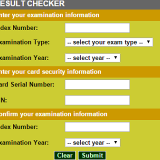The Personality Brokers (2018) Book Summary and Insights
Book Title: The Personality Brokers
Subtitle: The Strange History of Myers-Briggs and the Birth of Personality Testing
Publication Date: 2018
Author Name: Merve Emre
Book Summary
Merve Emre takes readers on a walk through the lives of Katharine Briggs and Isabel Myers, and the factors that influenced the creation of the Myers–Briggs Type Indicator (MBTI) personality test.
The MBTI is a personality test which you have probably taken at some point, whether in school, at work or online while surfing the web. The test works to group individuals into 16 distinct personality types based on their decisions, traits, and inclinations.
This book sheds more light on the Myers-Briggs Test Indicator, including its back-story; how it came to be; ideas that influenced the personality test, and even the negative backlash it has received.
Who is This Book For?
This book is perfect for psychology enthusiasts, people looking to read up about women making waves in history, and anyone curious about how the personality test came to be.
About the Author
Merve Emre is an author and an assistant professor at McGill, where she teaches English. Other than The Personality Brokers, she has written Paraliterary: The Making of Bad Readers in Postwar America. She works as the senior editor for the Los Angeles Review of Books published in 2017, and has had her work featured in many magazines including Harper’s Magazine, The New Yorker, and The New Republic. Emre lives with her husband and two sons in Oxford, England.
Buy Book: Support The Book Author And Our Work
Great books should be read, studied and reviewed, so reading the actual book may provide more value to you than the book insights on this page. This will also support the work of the book author(s) and what we do on LarnEdu.
Important Notes
Every time you make a purchase on Amazon via our affiliate link, Amazon will give us a small percentage of the revenue generated from the sale. This is valid if you purchase an item within 24 hours of clicking our affiliate link or if you add any item to your cart and checkout within 90 days. This supports our work with no additional cost to you.
The information on this page is intended to supplement the original book. It is not a book review, but condenses the key themes and ideas explored within the book in under 5000 words. The content creator of LarnEdu does not necessarily support the views, thoughts or opinions expressed within the text/book. Thus, your own judgement should be exercised when considering ideas expressed on our web channels.
Reading the contents of this page does not guarantee specific results. Books and their summaries or insights can be valuable educators; however, we believe the best lessons are learnt in the real world. LarnEdu and its content creators accept no responsibility or liability for the accuracy of the information on this page or how it is used.
Book Insights

Introduction
Katharine Briggs and her daughter, Isabel Myers worked together to create this excellent take on the concepts and classifications of personalities. The test they created became one of the world’s most popular personality tests, used by Fortune 500 companies, the military, hospitals, universities, and even churches.
The book touches on the theories that led to the development of the personality test, the classifications of personalities, and exposes the questions that doubt the authenticity of the Myers-Briggs Type Indicator.
The Myers-Briggs Type Indicator (MBTI)
The Myers-Briggs Type Indicator is one of the most popular personality tests in the world today. It owes its popularity to the easily understood, non-complex nature, allowing anyone easily know what type of personality they have. This personality has literally infiltrated almost all areas of the world, from businesses to the military, and hospitals. You might have even taken the test yourself, maybe to get to know and understand yourself better.
A mother-daughter duo, who based their material off the findings of Carl Jung created the test. The Second World War was a time of great unrest and distress but, this team took this time to build and develop the personality questionnaire. Basically, the test involved simple questions that would shed light on an individual’s personality based on choices and other human behaviour.
The different traits are; Introversion (I), Extraversion (E); Feeling (F), Thinking (T); Judging (J), Perceiving (P), and Intuition (N), Sensing (S). These 4 dichotomies are a general classification for assessing personalities. The questionnaire comes in the form of 93 questions which challenge a user’s preference. They composed these questions to understand the traits more present in each individual, and how an individual would respond to certain circumstances.
The test then converts your answers into a determinant of your personality, which could be any of the combination traits. For example, your results could show you as an ISFP (introverted, sensing, feeling and perceiving) personality, or an ESTJ (extroverted, sensing, thinking, and judging) personality type.
It is important to note that although this is a test of sorts, no answers are “right or wrong” but, each individual is different and so would your reaction and insights be. To get accurate results from the test, you must answer the questions honestly and truthfully.
Theories Of Carl Jung
We might prefer to use the MBTI today but, this personality test stemmed from the most unscientific theories. Carl Jung was a twentieth century psychologist who raised a lot of controversy with his unorthodox theories and views on matters.
A lot of analysts have problems with the theory, because Jung’s theory is more fictional than factual. They believe that Jung’s ideas are influenced by thoughts on spirits, and questionable principles. So, Briggs basing her own personality test on these theories caused quite a stir.
Katharine Briggs was of the belief that everybody’s personality was unique and fell under a classification. She then made it her mission to theorise as many diverse umbrellas for people to fall under, using Jung’s theories as a skeleton.
Behavioural psychologist, John B. Watson countered Jung’s theories on personality, stating that they were more inclined towards religious mysticism, and less science. Watson stood by his claim, stating that Jung’s classification of personality types was based on little more than speculations. Jung, on his own part, refused to subject his theories to more scientific testing. His own reason was that science does not take into account the more sensitive aspects of human personalities and, areas like religion and philosophy had a more concrete understanding.
Jung’s book, Psychological Types, published in 1921, embraces ideas from African concepts, Greek mythology, and other unscientific assumptions.
The very foundation of the Myers-Briggs personality test proved shaky, especially as Katharine Briggs displayed an unhealthy fascination with Carl Jung.
Briggs began to treat Jung as more of a god than a mere inspiration. She made many unnatural claims, including that Jung appeared to her in a dream which spurred the decision to immediately destroy all notes and research on her ongoing work. Briggs referred to Jung’s work as her bible, credited him with the inspiration for all her work, and even began writing erotic fiction featuring him.
Unfortunately for Briggs, her devoted worship proved futile, as she never met Jung in the course of her life.
Early 20th Century
The world received Katharine Briggs’ personality test with great acclaim, especially in the early parts of the twenty-first century. The first introduction the American public got to the Myers-Briggs personality test was through a 1926 published article, titled “Meet Yourself: How to Use the Personality Paintbox”.
Briggs method called for readers to categorise their answers and life choices according to colours, allowing readers the chance of self-discovery. The test could not have come at a better time, as the society was heavily weighed down with psychological baggage in the 1920s. This was actually the beginning of the trend of self-help books and motivational texts.
Slightly different from what we face now, the troubles of the 1920s seem smaller. Then, the major problems were rebellious wives, teenage daughters, and a personal loss of identity which religion could no longer fix. Briggs took this opportunity to present Americans with the purpose they searched for, giving individuals a chance to prove they were unique and classifiable.
The Corporate Capitalist
Isabel Myers took over where her mother left off while the Germany was undergoing an uprising. People began to draw parallels between the grouping of Jews into concentration camps by the Nazi, and the MBTI personality grouping.
The German philosopher, Theodor Adomo made a notable comparison between Isabel’s personality groupings and the Nazi purge of the Jews, in his book “The Authoritarian Personality”. He believed it was a more refined version of Hitler’s inhumane regime.
He argued that this was another means of separating society into different classes, with one always on top. Adomo denounced the theory that we can group human beings into personality types, refusing to believe that we share traits, temperaments, and behavioural patterns.
Isabel Myers and Katharine Briggs might have created a controversial test but, their legacy lives on, clear in the popularity of the MBTI today.
With over 2 billion dollars as its net worth, the industry has defied all odds and survived. The problem lies in the lack of proper scientific backing. Also, analysts have found that when participants took the test on two different occasions over time, the results proved conflicting. This served as more reason for doubt of authenticity.
Although the MBTI has garnered a boatload of controversy, we still lean towards it because, we enjoy being grouped in a definable class. This allows us to accept who we are, without looking for a way to make ourselves better or constantly wondering why we are the way we are. The MBTI might lack in the scientific aspect but, it is still the most preferred personality test.
Key Quotes
Here are some key quotes from the book:
“For some time, it has been a well-known fact that the type indicator is not scientifically valid, that the theory behind it has no basis in clinical psychology; and that it is the flagship product of a lucrative global corporation, one whose interests sit at the shadowy crossroads of industrial psychology and self-care.”
“two million a year, in nearly all Fortune 500 companies and U.S. colleges and universities, in community centers and churches and couples’ retreats, in the army, the navy, and the CIA”
“Scientific or not, the indicator had always managed to spark a sudden and ecstatic perception of self-knowledge in its subjects, no matter their age, sex, education, occupation, or political leanings, no matter their initial skepticism toward its operations.”
Conclusion
The mother-daughter duo of Katharine Briggs and Isabel Myers designed the Myers-Briggs Personality Indicator. The test works to classify individuals into different personality types; 16 in total.
They base the test on the writings of Carl Jung, who was a psychologist in the 20th Century. The test has brewed a lot of controversy in the world, starting with analysts challenging its lack of scientific backing. People have found the test to be comforting, to say the least. The test has proved very helpful in defining different people and classifying them into personality types.
Since You’re Here …
Great books should be read, studied and reviewed, so reading the actual book may provide more value to you than the book insights on this page. This will also support the work of the book author and what we do on LarnEdu.
Furthermore, you can support LarnEdu by making a one-off or monthly donation (via PayPal) for as little as £0.99 or by sharing this content.
Got any feedback or suggestions? Use the comment section below or send us a message.















